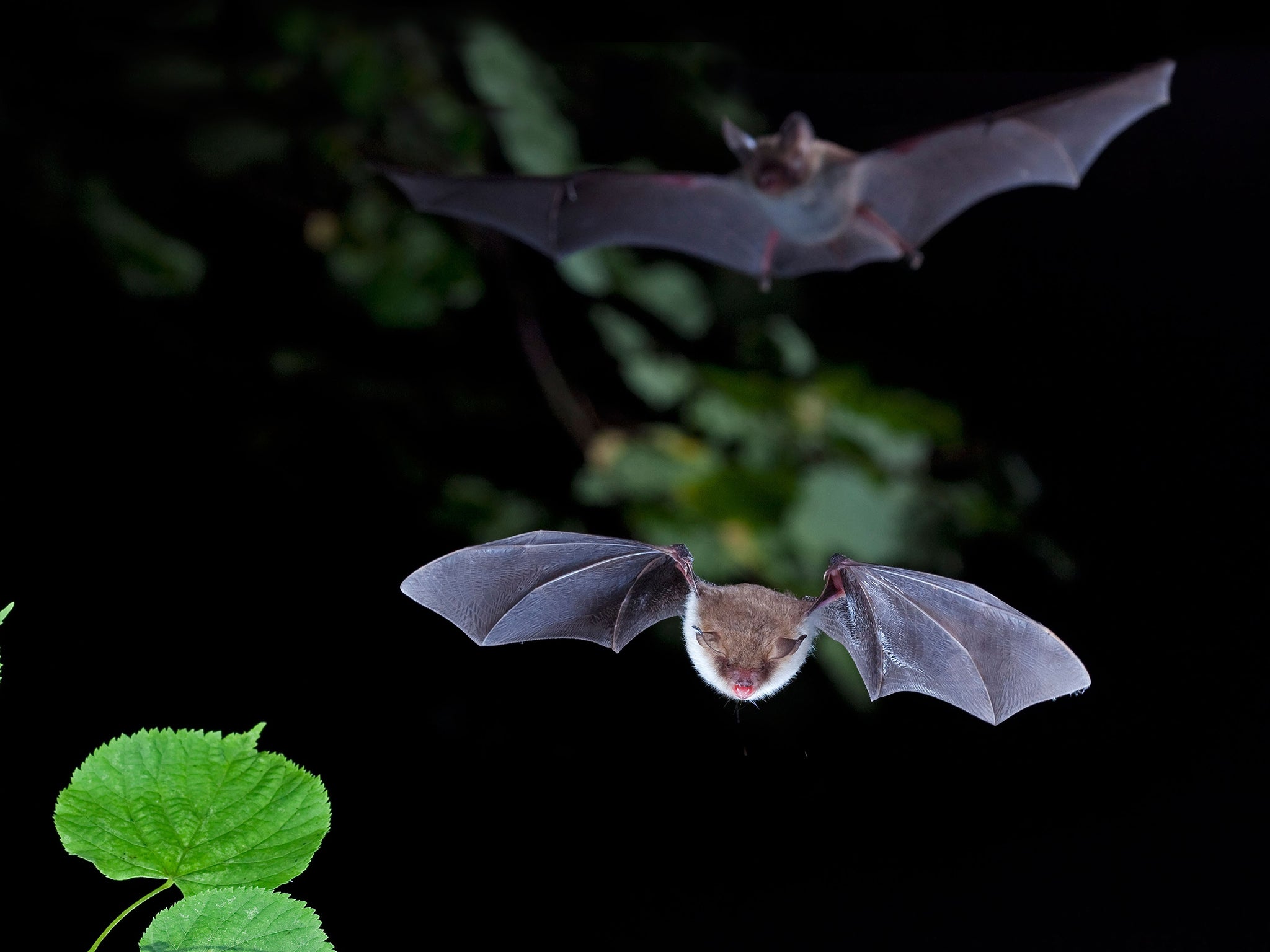Revealed: bats are frequent fliers – but hang out with the same crowd
Five-year study of Oxfordshire colonies sheds new light on the mammals’ domestic life

They may not be the cuddliest of creatures but bats are capable of forming strong friendships, to the point of being cliquey, according to new research.
The five-year study, which looked at the behaviour of the two species of bats living in Wytham Woods in Oxforshire, also confirmed that bats “move house” every few days – although usually only just down the road.
Despite frequent relocations, the bats formed enduring “friendships” that in many cases lasted more than a year, with each group roosting in separate but adjacent parts of the woods, the study concluded. It also says some species like mixed groupings while others typically favour single-sex communities.
“When the first results came through it was a real eureka! moment. I hadn’t expected to see so many separate groups in the woodland,” said Dr Tom August, from the Centre for Ecology and Hydrology.
The universities of Exeter and Oxford were also involved in the paper, which is published today in the scientific journal Plos One.
Dr Fiona Mathews, of Exeter University, said: “This work has really important practical implications for bat conservation. We now realise that although social groups of woodland bats ‘move house’ every few days, they remain within a very small geographical range. This means that even small-scale felling may destroy all the roosts potentially available to a group.”
The study found the structure of the bat social groups differs between two separate but closely related species living in the same woodland. One species – the Natterer’s – forms mixed-sex social groups while those formed by the Daubenton’s are mostly same-sex.
The experiment involved fitting nearly 1,500 bats with small aluminium leg bands – and a further four with tiny lightweight radio-transmitters, so they could be tracked. The tracking confirmed previous studies showing that bats changed roost site frequently – about once every few days.
Furthermore, it determined for the first time that they tend to stick together, with colony sizes ranging from two to 35 individuals, with the most common groups comprising seven to 10 bats.
Colony sizes tend to vary depending on the species, with some comprising hundreds of individuals. Bracken Cave in Texas is the largest in the world, hosting 20 million bats in the summer.
It is not known why bats move so frequently. Dr August said it could be that they are constantly searching for the best microclimate – temperature and humidity – which will often change from day to day depending on the weather.
Alternatively, they may be avoiding parasites. If bats stay in a roost for too long parasites such as fleas and bat-flies build up, and frequently switching locations helps avoid this.
Dr Mathews said: “The social networks of animals are poorly understood. Yet they are fundamentally important to processes ranging from information transfer to the spread of disease.
“Just as some people are super-connected on Facebook, this work shows that in animal systems, two very closely related species living in the same habitat can have very different kinds of social network.”
Dr August said he hoped to build on the findings. “Learning about bats’ social structure helps us understand how best to protect populations in the wild, but this study is only the beginning, we still have a lot to learn.”
Danielle Linton, from Oxford University, added: “The patterns of social organisation that have emerged from seemingly random ring recapture data are fascinating. Using the same sampling regime, striking behavioural differences have been revealed between two similar species that roost in the same area.”
The study of the bats, which make up almost a third of the world’s mammal species, was carried out on a 415 hectare site on Wytham Woods.
Subscribe to Independent Premium to bookmark this article
Want to bookmark your favourite articles and stories to read or reference later? Start your Independent Premium subscription today.

Join our commenting forum
Join thought-provoking conversations, follow other Independent readers and see their replies